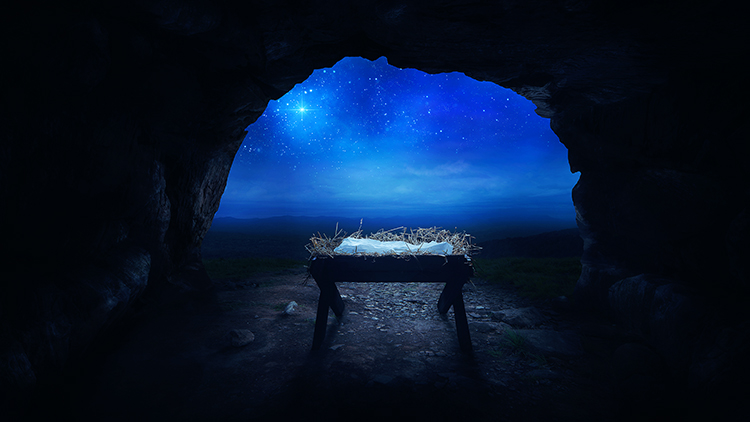Dear Friends,
On these cold, dark days, I feel my mammalian pattern taking over. I find it hard to wake up in the deep darkness of morning; I need the bright light of the sun to rouse me from dreams and slumber. I also end up eating all those Christmas goodies you have shared with me even though at the moment I am not hungry. My body has moved into a hibernation phase where it wants to put on lots of calories to keep me alive while I curl up in a cave and endure the cold surrounding it. This body of mine tells me it is perfectly okay to sleep all day long, getting up to eat and complete only the absolutely necessary tasks. Our cousins, the bears, have their response to this time of year perfected. Some may call it seasonal affective disorder but it is just my “bear” side coming out…I growl when someone gets between me and food and sleep.
This time of year seems to naturally call for isolation. Not surprising then that in the midst of seasonal darkness and cold the Church has placed our celebration of the birth of the one who brings light and the warmth of God’s love. We do not know Jesus’ actual birthdate but nature this time of year certainly symbolizes how humanity was living prior to the coming of the Messiah.
There is nothing in scripture to tell us when Jesus was born other than “shepherds keeping watch over their flocks at night” which would lead us to conclude that it is the time of year when lambs are born requiring a night watch, that would be springtime.
The earliest comment we find in the Church Fathers about the time of Jesus’ birth comes from Clement of Alexandria in about 200 AD. According to Clement, “There are those who have determined not only the year of our Lord’s birth, but also the day; and they say that it took place in the 28th year of Augustus, and in the 25th day of [the Egyptian month] Pachon” [May 20 in our calendar]. From scripture, it is much easier to determine the time when Jesus died, there are loads of scriptural references for Passover!
By the fourth century, there are references to two dates that were widely recognized as Jesus’ birthday: December 25 in the western Roman Empire and January 6 in the East. The modern Armenian church continues to celebrate Christmas on January 6; for most Christians, however, December 25 would prevail, while January 6 eventually came to be known as the Feast of the Epiphany. The period between became the holiday season later known as the 12 days of Christmas.
I know there are those who believe that the Church decided on late December because there were pagan feasts happening at the same time and that a good feast in the midst of winter would be popular. However, contemporary scholars find no evidence to support that theory in early Church documents. In fact, the early Church was so heavily persecuted up to the time of Constantine that they would have run from trying to absorb a pagan feast for their own. It is not until much later in the Church’s history that missionaries would try and use pagan symbols for Christian ideas…like the Christmas tree which comes from Germanic worship of trees…
The real reason that the early Church chose December 25th is because there was a long tradition that said Jesus’ death and his conception took place around the first day of spring. Here is what St. Augustine wrote in 399 AD: “For he [Jesus] is believed to have been conceived on the 25th of March, upon which day also he suffered; so the womb of the Virgin, in which he was conceived, where no one of mortals was begotten, corresponds to the new grave in which he was buried, wherein was never man laid, neither before him nor since. But he was born, according to tradition, upon December the 25th.”
May the upcoming celebrations encourage us to get out of our caves and celebrate with others the good news of the birth of the Light of the World.
Peace,
Fr. Damian



